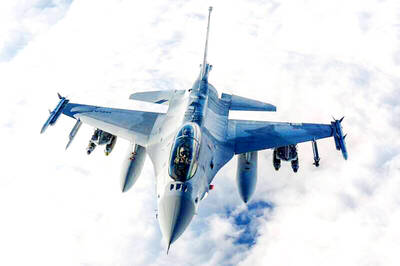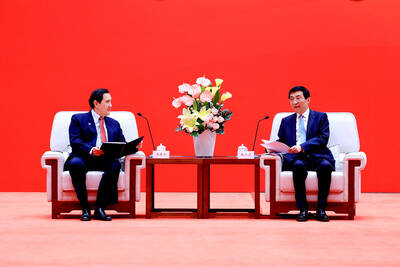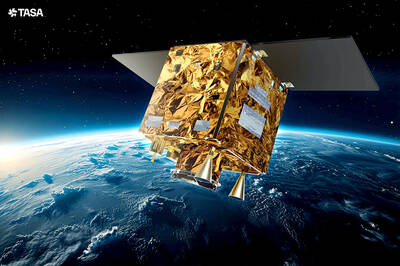Nobody knows what was going on in the minds of Hisashi Ouchi, Masato Shinohara and Yutaka Yokokawa when they made the childishly simple mistake that triggered the worst nuclear accident in Japanese history last week.
When they turned up for work on Thursday morning, they were expecting a day like any other. Their small, privately run plant in Tokaimura was considered to be a relatively low safety risk in comparison with the huge power generators and experimental reactors in the area. In fact, the building looked so innocuous that many locals were unaware it was a nuclear facility.
But inside, staff were developing a new kind of fuel for the experimental fast breeder reactor in Oaraimachi.
Their new work involved enriched uranium and it appears the workers did not know, or had "forgotten," the dangers of this highly volatile material, which is eight times more radioactive than the normal fuel.
On Thursday, the three men felt secure enough to enter the processing area at about 10am without the regulation full protective clothing. Such complacency is worrying, but what they did next beggars belief.
According to JCO, the company that operates the plant, the three men cut corners in the most dangerous manner imaginable as they were preparing the enriched uranium for use as reactor fuel. The maximum amount of the fissile material that should be kept together is 2.4kg, but they used almost seven times that amount -- enough to make a nuclear bomb. And while they should have used an automatic pump to move the uranium from tank to tank, they reportedly carried it manually in stainless steel buckets.
Moments later, the uranium reached critical mass, which set off a chain reaction of the sort that usually only occurs in explosions of atomic weapons or within the carefully controlled environment of a reactor. The last thing workers reported seeing before losing consciousness was a blue flash.
Then all hell broke loose within the plant. Alarms sounded and workers ran to rescue their colleagues before evacuating themselves.
Medical and fire teams rushed to the site, where they were exposed to radioactivity that jumped suddenly to 4,000 times the normal level.
Meanwhile, less than a mile away, groups of children at St Mary's international school were outside having physical education, unaware that radiation levels had crept up to more than 10 times what they should have been. It was not until more than three hours later that the school was told to keep all its children inside and shut all the doors and windows.

ALT="Editorial illustration" ALIGN=CENTER>
"I thought something was up when I saw lots of helicopters buzzing overhead, but I had no idea that it was so close," said the school's headmaster, Peter Gaskin.
By the time the children were inside, police wearing white protective clothing had cordoned off an area around the site. A public address system warned those living within a 350-meter radius to evacuate to a nearby community centre, where they were checked for contamination.
"I didn't have a clue what they were saying," said one of the evacuees. "All I could hear was a racket outside the window, but then a neighbor rang me. That is when I became worried."
Those fears grew at 4pm, when readings showed that radioactivity, which seemed to have been subsiding, was on the rise again. This indicated that the chain reaction was continuing, but JCO inspectors were unable to get near enough to the contaminated area to confirm what was happening.
Over the next few hours, Japan was gripped by the fear that the accident was out of control. The Japanese prime minister, Keizo Obuchi, said the situation was extremely "grave" and cancelled a Cabinet reshuffle that had been planned. The Ibaraki prefectural authorities expanded the "stay home" zone to a six-mile radius around the site, making 310,000 people captives in their own homes. Roads were closed and the East Japan Railway company halted trains through the area.
"It was terrifying," said Kenji Shibata. "I have lived in this area for all my life, but I never dreamed this would happen. I couldn't sleep at all last night."
Throughout the night, 16 JCO officials exposed themselves to radiation while trying to stop the chain reaction by draining the site of coolant water, which was serving only to reflect -- and increase -- the energy from the reaction. At 6:15am, they finally had the situation under control. The news, which was announced as Japan was waking up, helped to ease people's fears, but it did nothing to counter the growing feeling of anger.
"How could JCO have allowed three people to make such a fundamental mistake," said Michio Kawabata, a local resident.
"And why did the authorities take such a long time to respond and to warn us about what happened?"
The same questions were being asked throughout the day by opposition politicians and the media. The government's top spokesman, Hiromu Nonaka, admitted that the government's response was slow. "As a modern nation, it is shameful that this kind of accident occurred."
Senior JCO officials have spent much of the past two days prostrating themselves in apology.
At the evacuation center in Tokaimura, two JCO managers went down on their hands and knees to beg for forgiveness from furious residents. "We have no words to express our apologies, We cannot escape out responsibility," said the company's spokesperson, Yukio Hiraoka.
That responsibility is likely to mean legal action. On Friday, police began investigating the company's actions.
For those affected, however, this is little consolation. Two of the three injured men are in a critical condition. At least another 69 people have suffered from exposure to harmful levels of radioactivity.
Residents remain worried. Although the all-clear was given yesterday afternoon, many said they would remain indoors. More than 10,000 have already sought medical checks.
"We have faced an invisible enemy," said Briton Penny Riley, an English teacher who lives less than a mile from the site and who was unable to sleep as she worried about herself and her daughter's safety. "We can only hope that there are no long-term effects."
Makoto Morita, chief of the general affairs department of JCO, said: "We do not know why the workers did what they did. We are investigating the matter."
An official at the company's Tokyo office said the workers were breaching standard safety regulations when they poured such a large amount of radioactive solution into the tank.

LONG FLIGHT: The jets would be flown by US pilots, with Taiwanese copilots in the two-seat F-16D variant to help familiarize them with the aircraft, the source said The US is expected to fly 10 Lockheed Martin F-16C/D Block 70/72 jets to Taiwan over the coming months to fulfill a long-awaited order of 66 aircraft, a defense official said yesterday. Word that the first batch of the jets would be delivered soon was welcome news to Taiwan, which has become concerned about delays in the delivery of US arms amid rising military tensions with China. Speaking on condition of anonymity, the official said the initial tranche of the nation’s F-16s are rolling off assembly lines in the US and would be flown under their own power to Taiwan by way

CHIP WAR: The new restrictions are expected to cut off China’s access to Taiwan’s technologies, materials and equipment essential to building AI semiconductors Taiwan has blacklisted Huawei Technologies Co (華為) and Semiconductor Manufacturing International Corp (SMIC, 中芯), dealing another major blow to the two companies spearheading China’s efforts to develop cutting-edge artificial intelligence (AI) chip technologies. The Ministry of Economic Affairs’ International Trade Administration has included Huawei, SMIC and several of their subsidiaries in an update of its so-called strategic high-tech commodities entity list, the latest version on its Web site showed on Saturday. It did not publicly announce the change. Other entities on the list include organizations such as the Taliban and al-Qaeda, as well as companies in China, Iran and elsewhere. Local companies need

CRITICISM: It is generally accepted that the Straits Forum is a CCP ‘united front’ platform, and anyone attending should maintain Taiwan’s dignity, the council said The Mainland Affairs Council (MAC) yesterday said it deeply regrets that former president Ma Ying-jeou (馬英九) echoed the Chinese Communist Party’s (CCP) “one China” principle and “united front” tactics by telling the Straits Forum that Taiwanese yearn for both sides of the Taiwan Strait to move toward “peace” and “integration.” The 17th annual Straits Forum yesterday opened in Xiamen, China, and while the Chinese Nationalist Party’s (KMT) local government heads were absent for the first time in 17 years, Ma attended the forum as “former KMT chairperson” and met with Chinese People’s Political Consultative Conference Chairman Wang Huning (王滬寧). Wang

OBJECTS AT SEA: Satellites with synthetic-aperture radar could aid in the detection of small Chinese boats attempting to illegally enter Taiwan, the space agency head said Taiwan aims to send the nation’s first low Earth orbit (LEO) satellite into space in 2027, while the first Formosat-8 and Formosat-9 spacecraft are to be launched in October and 2028 respectively, the National Science and Technology Council said yesterday. The council laid out its space development plan in a report reviewed by members of the legislature’s Education and Culture Committee. Six LEO satellites would be produced in the initial phase, with the first one, the B5G-1A, scheduled to be launched in 2027, the council said in the report. Regarding the second satellite, the B5G-1B, the government plans to work with private contractors